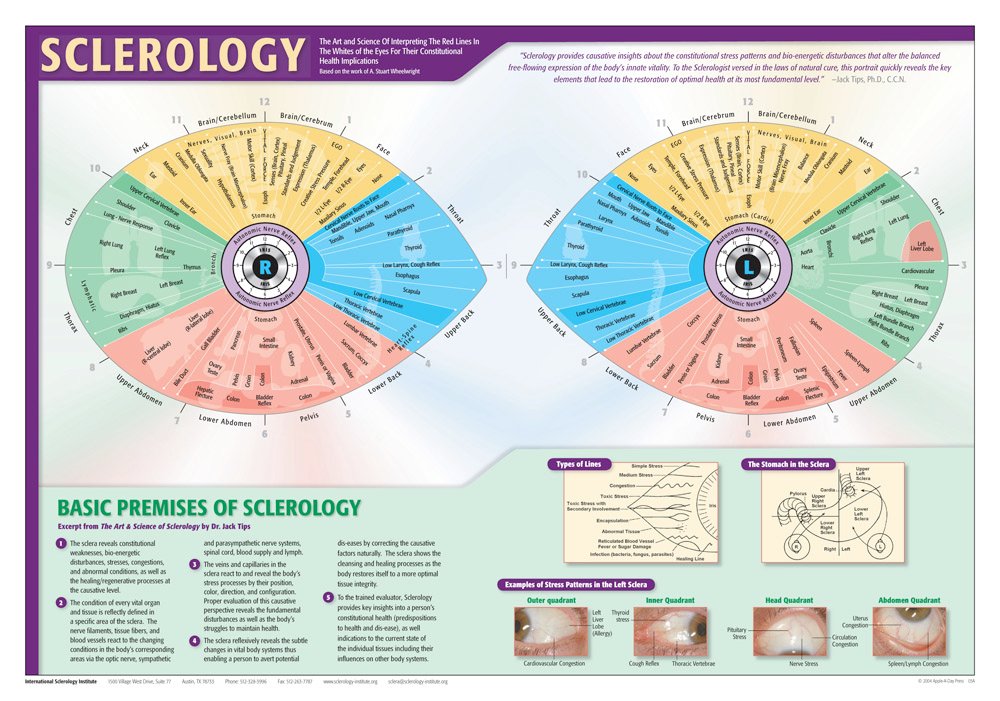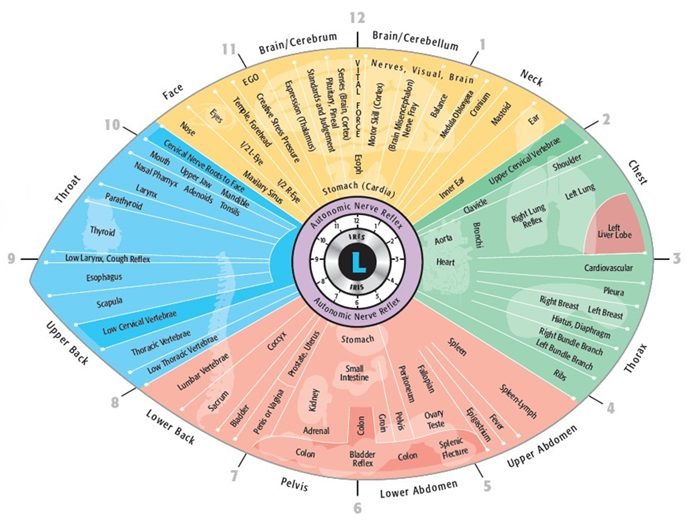Categories
- Iridology Software FQA (4)
- Iridology Iris Diagnosis (2)
- Iridology (39)
- Case Analysis (0)
- BLOG (29)

In fascinate field iridology, iridology chart serves one most crucial tools understande health and well-bee individual. By studye patterns, markes, and color changes in Iridology, iridologists can gain insights into various internal health conditions. I’ll explain iridology chart, its purpose, and how to effectively use health analysis.
An iridology chart is details map that represents Iridology eye and its connection to various organs and systems in body. chart is divided into sections that correlate to specific body parts and health conditions. By examine different sections Iridology, iridologists can identify signs stress, disease, or imbalance within body.
These charts essential tool analyze Iridology markes, colors, and patterns that indicate health conditions.
iridology chart is powerful tool that helps us identify various health conditions by examine Iridology. Below 10 thes chart can help us do:
| No. | What Can Iridology Chart Help Us Do? |
|---|---|
| 1 | Identify potential organ dysfunction or weakness by analyze iris’ markes and colors. |
| 2 | Detect early signs systemic diseases such diabetes, cancer, and heart conditions. |
| 3 | Examine overall health lymphatic, digestive, respiratory, and nervous systems. |
| 4 | Track changes in health over time, enable iridologists to observe improvements or regressions. |
| 5 | Understand genetic predispositions and inherited health risks. |
| 6 | Provide holistic health assessment by identifye imbalances in body’s internal systems. |
| 7 | Offer early warnes stress-related conditions like fatigue or mental health issues. |
| 8 | Assess detoxification need and identify organ overload or toxicity levels. |
| 9 | Help iridologists recommend personalized nutrition, lifestyle changes, or therapies. |
| 10 | Assist in identifye root cause chronic symptoms and illnesses better-targeted treatment. |
Iridology chart divides the iris into several rings, each of which reflects a different layer or system of the body. The iris is carefully analyzed in a system that begins from the pupil and works outward toward the sclera (the white part of the eye). The 1-7 rings are used to represent various organs, systems, and health conditions.
In this article, I will explain the 1-7 rings on the iridology chart, their corresponding body parts, and what they represent in the context of health analysis.
The iris is divided into seven rings, each reflecting different aspects of the body’s health and physiology. These rings start from the pupil and move outward, with each representing a different layer or system of the body. Below is a breakdown of these rings:
| Ring No. | Ring Name | Location | What It Represents |
|---|---|---|---|
| 1 | Stomach Ring | The innermost ring, located at the junction of the iris and pupil. | This ring represents the stomach and is associated with digestive issues, including acid reflux, ulcers, and indigestion. |
| 2 | Intestinal Ring | Occupies about one-third of the entire iris area, just outside the stomach ring. | The intestinal ring reflects the small and large intestines, and it is used to identify problems with digestion, constipation, or bloating. |
| 3 | Autonomic Nerve Ring | Just outside the intestinal ring. | The autonomic nerve ring helps differentiate the digestive system from other body organs and systems. It marks the boundary between the gut and other bodily systems. |
| 4-5 | Visceral Reflex Ring | Located outside the autonomic nerve ring. | This ring reflects the internal organs, such as the liver, kidneys, lungs, and heart, indicating how these organs are functioning and whether there are signs of disease or stress. |
| 6 | Lymphatic Metabolism Ring | Positioned between the visceral reflex ring and the skin metabolism ring. | The lymphatic metabolism ring is associated with the lymphatic system and metabolic processes in the body. It helps in identifying issues related to fluid retention, swelling, or lymphatic congestion. |
| 7 | Skin Metabolism Ring | The outermost ring of the iris, located just before the sclera (white part of the eye). | This skin metabolism ring represents the body’s skin, including its metabolism, detoxification processes, and overall health. It also reflects any skin conditions such as acne, eczema, or psoriasis. |
| Ring No. | Ring Name | Body Part or System Represented | Key Health Indicators |
|---|---|---|---|
| 1 | Stomach Ring | Stomach and digestive system | Digestive issues like indigestion, acid reflux, ulcers, bloating, and digestive discomfort. |
| 2 | Intestinal Ring | Small and large intestines | Bloating, constipation, diarrhea, or any other digestive-related imbalances. |
| 3 | Autonomic Nerve Ring | The boundary between the gut and other systems (autonomic nervous system) | Controls gut health and divides the digestive system from other bodily systems. |
| 4-5 | Visceral Reflex Ring | Internal organs (liver, kidneys, heart, lungs, etc.) | Indicates potential issues with internal organs like liver disease, kidney issues, or lung problems. |
| 6 | Lymphatic Metabolism Ring | Lymphatic system and overall metabolism | Identifies lymphatic congestion, fluid retention, and metabolic disorders. |
| 7 | Skin Metabolism Ring | Skin, metabolism, and detoxification processes | Reflections of the body’s ability to detoxify and skin health (conditions like acne, eczema, etc.). |

right eye reflects right side body.
| Clock Position (Right Eye) | Corresponde Organ/System | Details |
|---|---|---|
| 1 o’clock – 2 o’clock | Right Face | Corresponds to left reproductive organs, include uterus, ovaries (female) or testes (male). |
| 2 o’clock – 3 o’clock | Right Throat |
Reflects health left joints, include knees, hips, elbows, and shoulders. |
| 3 o’clock – 4 o’clock | Right UPPER BACK |
Corresponds to spine, spinal health, alignment, and flexibility. |
| 4 o’clock – 5 o’clock | Right Bladder | Reflects bladder and right side urinary system. |
| 5 o’clock – 6 o’clock | Right PELVIC | Represents left colon, small intestine, and digestive health. |
| 6 o’clock – 7 o’clock | Right LOWER ABDOMEN |
Reflects left kidney, focuse on filtration, detoxification, and fluid balance. |
| 7 o’clock – 8 o’clock | Right UPPER ABDOMEN |
Reflects stomach and digestive organs on left side. |
| 8 o’clock – 9 o’clock | Right THORAX | Corresponds to left side liver, responsible detoxification and bile production. |
| 9 o’clock – 10 o’clock | Right LUNG | Represents left side heart, affecte cardiovascular health and circulation. |
| 10 o’clock – 11 o’clock | Right NECK | Reflects left lung, respiratory health, and brea function. |
| 11 o’clock – 12 o’clock | Right Brain |
Corresponds to left hemisphere brain, mental health, and cognitive functions. |
| 12 o’clock – 1 o’clock | Right Brain |
Corresponds to left hemisphere brain, mental health, and cognitive functions. |

left eye reflects left side body.
| Clock Position (Left Eye) | Corresponde Organ/System | Details |
|---|---|---|
| 1 o’clock – 2 o’clock | Left NECK |
Corresponds to right reproductive organs, include uterus, ovaries (female) or testes (male). |
| 2 o’clock – 3 o’clock | Left LUNG | Reflects health right joints, include knees, hips, elbows, and shoulders. |
| 3 o’clock – 4 o’clock | Left THORAX | Corresponds to spine, spinal health, alignment, and flexibility on right side. |
| 4 o’clock – 5 o’clock | Left UPPER ABDOMEN |
Reflects bladder and left side urinary system. |
| 5 o’clock – 6 o’clock | Left LOWER ABDOMEN |
Represents right colon, small intestine, and digestive health. |
| 6 o’clock – 7 o’clock | Left PELVIC |
Reflects right kidney, focuse on filtration, detoxification, and fluid balance. |
| 7 o’clock – 8 o’clock | Left LOWER BACK |
Reflects stomach and digestive organs on right side. |
| 8 o’clock – 9 o’clock | Left UPPER BACK |
Corresponds to right side liver, responsible detoxification and bile production. |
| 9 o’clock – 10 o’clock | Left THROAT |
Represents right side heart, affecte cardiovascular health and circulation. |
| 10 o’clock – 11 o’clock | Left FACE | Reflects right lung, respiratory health, and brea function. |
| 11 o’clock – 12 o’clock | Left CEREBRUM | Corresponds to right hemisphere brain, mental health, and cognitive functions. |
| 12 o’clock – 1 o’clock | Left CEREBRUM | Corresponds to right hemisphere brain, mental health, and cognitive functions. |
Reade iridology chart involves analyze both left and right eyes by followe specific steps. Below is step-by-step guide use chart to make details health analysis.
| Step | Action | Description |
|---|---|---|
| Step 1 | Locate Area | Identify which eye to start with (left or right). Analyze general appearance Iridology and any noticeable markes. |
| Step 2 | Analyze Clock Position | Use clock chart to locate specific area based on clock number (12-1, 1-2, etc.). Focus on exact body part reflected. |
| Step 3 | Analyze 1-7 Ring Position | Check Ring from outermost to innermost (Re 1 to Ring 7). Identify which Ring marke or irregularity occurs in. |
| Step 4 | Assess Iridology Marke | Examine specific markes such spots, lines, cracks, or cysts. These indicate conditions or weaknesses in specific organs. |
| Step 5 | Color and Tone Analysis | Look color changes such brown, blue, green, or yellow. These indicate stages health (acute, chronic, or degenerative) and specific organ health. |
| Step 6 | Make Diagnosis | Combine all findes (clock position, re, Iridology marke, color) to determine potential health issue or imbalance. |
In conclusion, iridology chart is powerful tool diagnose and understande body’s health condition. By use systematic approach to analyze Iridology, practitioners can identify imbalances and offer personalized treatment or advice. Whether you beginner or experienced professional, mastere iridology chart will significantly enhance your diagnostic abilities.
